R.J. Stowell's Blog: rjsomeone, page 39
October 5, 2019
Repost - Tom Waits For No One - An Excerpt From Jay and the Americans
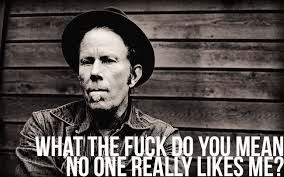 When I wrote Jay and the Americans, it was with the goal of keeping it 90% accurate. I'd been reading a lot of memoirs. For the first hundred pages or so, I'd find myself fascinated and then lose interest. The lack of plot in modern memoir was boring, no matter what The New York Times Book Review said. And so 90% of what is in Jay is the truth; the rest is fictional verisimilitude that serves as plot. I bring this up because Max Ten is real. Maxwell Tennial was the coolest kid at Van Nuys High and now the coolest dad and the coolest husband too, I suppose. I've always jokingly said that my man crush was Ellen, but really, it's Max Ten. OK, the point: Max sent me an email all about Waits after he read Jay and the Americans. I mean, how cool do you have to be to dis Waits? Am I right? Fucker even writes better than I do. Here's the email:
When I wrote Jay and the Americans, it was with the goal of keeping it 90% accurate. I'd been reading a lot of memoirs. For the first hundred pages or so, I'd find myself fascinated and then lose interest. The lack of plot in modern memoir was boring, no matter what The New York Times Book Review said. And so 90% of what is in Jay is the truth; the rest is fictional verisimilitude that serves as plot. I bring this up because Max Ten is real. Maxwell Tennial was the coolest kid at Van Nuys High and now the coolest dad and the coolest husband too, I suppose. I've always jokingly said that my man crush was Ellen, but really, it's Max Ten. OK, the point: Max sent me an email all about Waits after he read Jay and the Americans. I mean, how cool do you have to be to dis Waits? Am I right? Fucker even writes better than I do. Here's the email:Tom Waits is just awful.
I can imagine all the hipsters if they heard this statement, choking on their clove cigarettes, twisting their Smith Bros. beards, tripping over the laces of cherry Doc Martens; the tattoo that says, "You’re Innocent When You Dream," starts to itch, her mocha latte spills, she forgets to record Portlandia. "How could you say such a thing?" she implies with a look of disdain.
Reality: I don’t think I have ever seen a negative review of Tom Waits. Cool people are required to love him, and only the coolest people write music criticism, ergo blah blah blah; an assumption is made that those who don’t like him are listening to the Disney girls and Radio Banal.
I guess I'm just annoyed. If Waits had simply sung his songs like a normal human being instead of the Incredible Hulk (Tom Waits Smash), I'd have no reason to call him out; maybe if he didn't hope to expressly appeal to the margins of cool, to those college kids and the eternally infantine who prop up the Avant-Garde willy-nilly, I'd have nothing to complain about, but the newly devoted are the same types impressed by Duchamp's urinal in the same way that a four year old is thrown into hysterics by a floater in the bathtub. These folks play Rain Dogs in public at top volume to show how edgy they are, how unlike Mom and Dad. They prove that they are "artists" instead of frat boys by putting on Waits during the evening shift at Jamba Juice.
Point is, even the gods are flawed, or fall. Joni Mitchell comes to mind. From the sixties through Don Juan’s Reckless Daughter in 1977 she could do no wrong. Sometime after that she got bored, seemingly with her own talent, or she was far too influenced by the culture of cool, and, like Waits, began channeling old black men. We need Joni doing Charles Mingus about as much as we need a blonde Mingus singing "Circle Game."
For me Waits announces the coming of the art student in paint-splattered coveralls and gauges and dirt strategically left in the most visible places. Every move screams, "Look at me! I’m different; I'm post-colonial, post postmodern, deconstructing all I see and hear and step over; I must dress exactly like all other art students, rearranging the dirt and tattoos and duct tape, assuring that I recycle (but 'God don’t take away my K-cups.')"
So, yes, J’accuse! I object. How excited I was when "In the Neighborhood" was in rotation on MTV. Something new. "Look at this guy!" Or when he appeared in Rumblefish. Waits was cool exemplified - but all the hipsters have ruined that, reminded me that this is a fallen God. Ho-hum.
Swordfishtrombones is indeed a ten, the albums that preceded it are iconic, and there is nothing less beautiful about Franks Wild Years (sic), but that voice. Bowie said that Dylan had a voice like "sand and glue." The difference: that is Dylan; that's how he sounds. He's not a caricature of himself, a parody. Hipsters United has embraced the wrong Waits and I guess that's why I’m so bitter. Waits should be a ten all the way around. Makes me so angry. Just sing, Tom, like on "Neighborhood" or "Please Call Me, Baby." Sing like Waits sings, not like Waits with a trach. Okay, I'm done now. End of rant.
Jay and the Americans is available all over the world!
CreateSpace - Amazon - Amazon UK - Amazon France - Amazon Russia
Published on October 05, 2019 08:58
October 2, 2019
Beatles - Discography Part 3
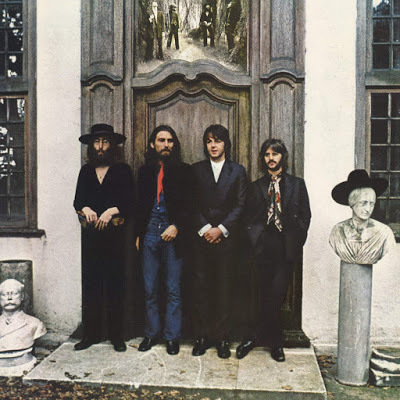
Many consider Rubber Soul to be the very first pop album, and by that I mean that each song was meant to be listened to, in order, with the album as a whole the focus rather than it being a collection of singles. Because of that, Rubber Soul is one of the most influential albums in music history; in particular, it is the album that inspired Brian Wilson to create his masterpiece Pet Sounds, Rolling Stone’s No. 2 album of all time.
Once again though, the British release of Rubber Soul was different from the one released by Capitol in the US. While I admire Capitol's reasoning for Meet the Beatles (all original material) and considerate it the better album over its British counterpart, I have mixed emotions about the differences in Rubber Soul.
Capitol's goal was to cash in on the acoustic folk craze in the U.S., and so they left off the songs "Drive My Car," an up-tempo rocker, the ballad, "Nowhere Man," "If I Needed Someone," and "What Goes On," replacing them with "I've Just Seen a Face" and "It's Only Love," from HELP! Both editions of the LP are stellar, and I go back and forth, leaning a little more to the American release, which will not be the case once we get to Revolver.
Before we do though, in America there was an album in-between called Yesterday and Today, which has four songs that weren"t on the American issue of Rubber Soul, three that won't be on Revolver when it’s released later in the year, two from HELP! and the singles, "We Can Work it Out" and "Day Tripper." There's nothing to compare it to in terms of a British equivalent, but it is an LP that truly stands on its own with songs like "I'm Only Sleeping," "Yesterday," "Nowhere Man" and "Drive My Car." The LP is famous for its "butcher cover," which we’ve covered before, making it one of the most valuable collectibles on vinyl.
 The Beatles responded to the Beach Boys' Pet Soundswith Revolver. There were 14 songs on the British addition and for the American release, all Capitol did was to remove those three songs that appear on Yesterday and Today. And while I'm a fan of "And Your Bird Can Sing" and "Dr. Robert," it’s the omission of "I’m Only Sleeping" that for me makes the British release far superior.
The Beatles responded to the Beach Boys' Pet Soundswith Revolver. There were 14 songs on the British addition and for the American release, all Capitol did was to remove those three songs that appear on Yesterday and Today. And while I'm a fan of "And Your Bird Can Sing" and "Dr. Robert," it’s the omission of "I’m Only Sleeping" that for me makes the British release far superior.Sgt. Pepper would be the very first Beatles LP to be a standard-issue for both the American and British audience, but that would not be the case for Magical Mystery Tour, which we've already discussed. The remainder of the British LPs would be identical to those released in the U.S. and include The White Album (officially called The Beatles), Yellow Submarine, Abbey Road and Let It Be, but capital records wasn't done cashing in on The Beatles, and so before the release of Let It Be came the album, Hey Jude, an LP that kind of collects everything that wasn't used already. There are two songs from A Hard Day's Night, the double-sided "Paperback Writer" and "Rain" single, the double-sided "Revolution" and "Hey Jude," the double-sided "Old Brown Shoe" with "The Ballad of John and Yoko," plus "Lady Madonna" and "Don’t Let Me Down." The LP has a stellar album cover and serves really as a survey of their career going all the way back to 1963. Keep in mind that with the exception of the songs from A Hard Day's Night, the rest of the LP is essentially all original material never before released on an album.
Just three months later the last of the 11 British LPs, Let It Be, was released, a month after the Beatles had called it quits. On the back of the Let It Be cover you’ll find the words "This is a new phase BEATLES album," but of course, it wasn't.
Published on October 02, 2019 06:04
October 1, 2019
The Beatles Discography - Part 2
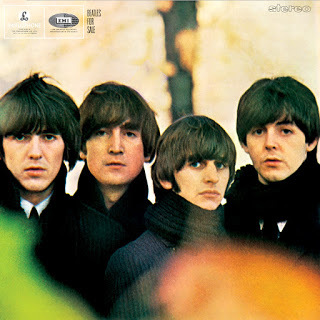 To follow up the release of Meet the Beatles, Capitol Records quickly released The Beatles Second Album two months later. The LP contained the covers that were left off Meet the Beatles and five original songs that hadn't been released on LP. The album went straight to No. 1, displacing the American Beatles debut.
To follow up the release of Meet the Beatles, Capitol Records quickly released The Beatles Second Album two months later. The LP contained the covers that were left off Meet the Beatles and five original songs that hadn't been released on LP. The album went straight to No. 1, displacing the American Beatles debut.The Beatles third LP (4th in the U.S.), A Hard Day’s Night, also had differing U.K./U.S. versions, a trend that would continue until Sgt. Pepper in 1967. The U.K. Version contained 14 original songs, including the seven songs written for the film. The U.S. version had the seven soundtrack songs along with five instrumental tracks performed by studio musicians and conducted by George Martin.
As a soundtrack, the LP was released on United Artists Records in the U.S. and not on Capitol. Each of the LPs had differing though similar cover art, with Robert Freeman photographs; four on the American version with a prominent red border, 20 on the British issue with a blue background. The songs not included in the American release would be included in the Capitol only album Something New just a month later. That LP would also contain two additional original tracks and a German-language version of "I Want to Hold Your Hand." A Hard Day's Night would spend 14 weeks at No. 1 with Something New sitting in the penultimate position, never making it to the top.
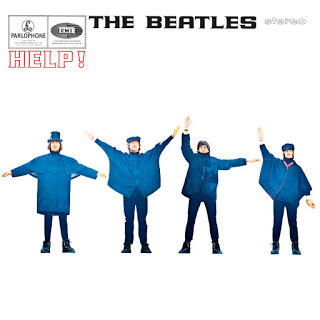 Here's something for collectors. Parlophone released a limited number of the Something New LP for servicemen overseas. Get your hands on one and you're a thousand dollars richer.
Here's something for collectors. Parlophone released a limited number of the Something New LP for servicemen overseas. Get your hands on one and you're a thousand dollars richer.In the U.S., Something New was followed by a documentary LP called The Beatles Story followed by Beatles '65 which contained 8 of the 14 songs from the British canon LP, Beatles For Sale, released December 4, 1964. The six omitted songs would appear on Beatles VI later in the year but not until after Capitol's release of The Early Beatles. Capitol had obtained the right to those songs on Introducing the Beatles released by VeeJay (12 of the 14 songs from Please Please Me). The LP was released without fanfare and was the only American release of a Beatles album not to make it to No. 1 or No. 2 on the charts. The Early Beatles made it to only No. 43.
In the meantime, the Beatles 4th British release, Beatles For Sale, would replace A Hard Day's Night as the top-selling LP and would stay there for seven weeks. It was replaced by The Rolling Stones No. 2, but would return to the top after a week. The Stones would regain the position after three weeks, but the Beatles, for sale it not, would again surge to No. 1 until ousted by Dylan's first electric release, Bringing It All Back Home. Eleven weeks total at No. 1.
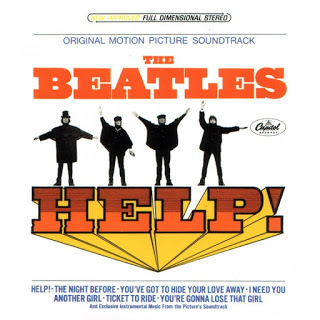 The first James Bond film, Dr. No, was released in 1962 and by 1965, with stellar hits like Goldfinger, the 007 films were immensely popular. The Beatles' timely spoof on espionage, Help!, found the Fab Four striving to record their new album while a fanatical cult aimed to steal one of Ringo's rings, all in glorious technicolor. It's not A Hard Day's Night but many consider the musical segments among the first music videos.
The first James Bond film, Dr. No, was released in 1962 and by 1965, with stellar hits like Goldfinger, the 007 films were immensely popular. The Beatles' timely spoof on espionage, Help!, found the Fab Four striving to record their new album while a fanatical cult aimed to steal one of Ringo's rings, all in glorious technicolor. It's not A Hard Day's Night but many consider the musical segments among the first music videos.The U.K. release of the LP, the Beatles' fifth, had seven songs from the film on Side One with seven additional songs on Side Two, among them "Yesterday," the most covered song in music history. The American version, on the other hand, was a true soundtrack with the seven originals songs and incidental music from the film.
The British album cover features the Beatles in semaphore positions supposedly spelling out HELP. According to Beatle photographer Robert Freeman, their positions just didn’t look right and so, in reality, the Beatles are really spelling out NUVJ , or, on the American release NJUV.
And here's where it gets confusing again. The seven songs from Side Two of the British release were spread among three American releases. Three songs on the previously released Beatles VI, two on Rubber Soul and two on Yesterday and Today, a Capitol only release. You're beginning to see why there were only 11 British releases vs. the 19 in the U.S.
Published on October 01, 2019 05:05
September 30, 2019
The Beatles Canon - Part 1 - It's Complicated
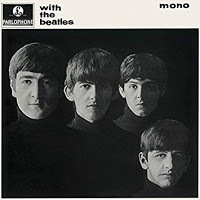 Bear with me... The official canon of Beatles LPs includes the 11 British Parlophone/Apple releases from Please, Please Me on March 22, 1963, to Let It Be on May 8, 1970. It does not include Magical Mystery Tour, which although an Album in the U.S., was merely an EP (Extended Player - long format 45s usually with two songs per side) in Britain. When the Beatles collected LPs were re-released on CD in the 1990s, EMI and Capitol Records, the Beatles label in the U.S., agreed to release the U.K. Versions of the LPs with the addition of the American version of Magical Mystery Tour, which contained the six songs from the film soundtrack (the British EP) on Side One and the addition of five Beatle singles, "Hello Goodbye," "Strawberry Fields Forever," "Penny Lane," "Baby You're a Rich Man" and "All You Need is Love" on Side Two.
Bear with me... The official canon of Beatles LPs includes the 11 British Parlophone/Apple releases from Please, Please Me on March 22, 1963, to Let It Be on May 8, 1970. It does not include Magical Mystery Tour, which although an Album in the U.S., was merely an EP (Extended Player - long format 45s usually with two songs per side) in Britain. When the Beatles collected LPs were re-released on CD in the 1990s, EMI and Capitol Records, the Beatles label in the U.S., agreed to release the U.K. Versions of the LPs with the addition of the American version of Magical Mystery Tour, which contained the six songs from the film soundtrack (the British EP) on Side One and the addition of five Beatle singles, "Hello Goodbye," "Strawberry Fields Forever," "Penny Lane," "Baby You're a Rich Man" and "All You Need is Love" on Side Two.  "Strawberry Fields" and "Penny Lane" had been released in the U.K. and in the U.S. as a double-A sided single. "All You Need is Love" was released with "Baby You're a Rich Man" as the B-Side, and "Hello Goodbye" as the A-Side b/w "I Am the Walrus." None of those songs appeared in album form on the U.K. releases.
"Strawberry Fields" and "Penny Lane" had been released in the U.K. and in the U.S. as a double-A sided single. "All You Need is Love" was released with "Baby You're a Rich Man" as the B-Side, and "Hello Goodbye" as the A-Side b/w "I Am the Walrus." None of those songs appeared in album form on the U.K. releases.Also of interest is the play order of the tracks on the EP and the LP. Side One/Disk One of the EP was "Magical Mystery Tour" and "Your Mother Should Know." Side Two was "I Am the Walrus." Disk Two had "Fool on the Hill" and "Flying" (the only Beatles instrumental) on Side One with "Blue Jay Way" on the flip side. Neither the EP or the LP released the songs in the order they appear in the film, with the order of the LP being the title track, "Fool," "Flying," "Blue Jay Way," "Your Mother Should Know" and "I Am the Walrus."
With the addition of MMT to the canon, there are 12 Beatles' LPs released over a period of 7 years. In America, there were 19 Capitol LPs, a documentary album and, on VeeJay Records, two LPs and an odd release called The Beatles Vs. The Four Seasons. So, why the differences?
Standard British LPs had 14 songs, 7 per side. In America, this format was reduced to six songs. If you're already confused, it gets worse. You'd think that would explain a lot; nah. The first Beatles LP is officially Please Please Me, which was not released in America. The LP contains eight original songs by Lennon/McCartney and six covers.
In the U.S., EMI's American subsidiary, Capitol Records, released an alternate debut called Meet the Beatles on January 20, 1964, nearly a year after Please Please Me and two months after the U.K. release of With the Beatles, the Beatles' 2nd album. With the Beatles and Meet the Beatles had the same black and white photograph of the band by Robert Freeman, although the American cover had a bluish cast added.
While I won't include a track by track difference, I will mention that Meet the Beatles was an LP of all original material, unlike the first two U.K. LPs, a decision that in many ways adds to Meet the Beatles' appeal. To add to the confusion, though, Meet the Beatles was superseded by an alternative debut from Chicago Label VeeJay Records called Introducing the Beatles released two weeks prior to Meet the Beatles. That LP was essentially a 12 song version of Please Please Me with the tracks "Please Please Me" and "Ask Me Why" omitted. These tracks had been the first VeeJay released single. One other interesting note is that VeeJay omitted McCartney’s 1, 2, 3, 4 count in "I Saw Her Standing There." Meet the Beatles topped the American album charts for 11 weeks with Introducing the Beatles climbing to No. 2 and staying there for nine weeks.
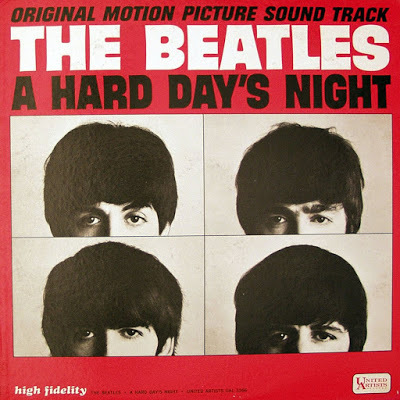 VeeJay could not keep up with the demand the LP and so, several counterfeit versions of the LP were commonly sold at major retailers. Check out your copy. If "The Beatles" appears below the hole and the rainbow label doesn't contain the color green, your copy is a fake. A valuable one, but a fake.
VeeJay could not keep up with the demand the LP and so, several counterfeit versions of the LP were commonly sold at major retailers. Check out your copy. If "The Beatles" appears below the hole and the rainbow label doesn't contain the color green, your copy is a fake. A valuable one, but a fake.To follow up the release of Meet the Beatles, Capitol Records quickly released The Beatles Second Album two months later. The LP contained the covers that were left off Meet the Beatles and five original songs that had not been released on LP. (It was the Beatles' policy in the U.K. not to release songs on LPs that were previously available on 45s.) The LP went straight to No. 1 displacing Meet the Beatles.
The Beatles third LP (4th in the U.S.), A Hard Day's Night, also had differing U.K./U.S. versions, a trend that would continue until Sgt. Pepper in 1967. The U.K. Version contained 14 original songs, including the seven songs written for the film. One of those, "I’ll Cry Instead" didn’t make the cut in the film. All seven songs were also included on the American release. The remainder of the American tracks were Beatle instrumentals performed by studio musicians and conducted by George Martin. As a soundtrack, the LP was released on United Artists Records in the U.S., UA owning the distribution rights. Each of the LPs had differing, though similar, cover art, featuring Robert Freeman photographs; four on the American version in a red border, 20 on the British issue with a blue background. The songs not included on the American release would be released on the Capitol only album Something New just a month later. That LP would also contain two incidental tracks and a German-language version of "I Want to Hold Your Hand." A Hard Day's Night would spend 14 weeks at No. 1 with Something New sitting in the penultimate position, never making it to the top.
Here's something for collectors. Parlophone released a limited number of the Something New LP for servicemen overseas. Get your hands on one and you're a thousand dollars richer.
In the U.S., Something New was followed by a documentary LP called The Beatles Story followed by Beatles '65, which contained 8 of the 14 songs from the British canon LP, Beatles For Sale. The six omitted songs would appear on Beatles VI later in the year but not until after Capitol's release of The Early Beatles. Capitol had obtained the right to those songs on Introducing the Beatles released by VeeJay Records. The LP was released without fanfare and was the only American release of a Beatles album not to make it to No. 1 or No. 2; The Early Beatles made it to only No. 43 on the Charts.
In the meantime, the Beatles 4th British release, Beatles For Sale, would replace A Hard Day's Night as the top-selling LP and would stay there for seven weeks. It was replaced by The Rolling Stones No. 2, but would return to the top after a week. The Stones would regain the position after three weeks, but the Beatles (for sale or not), would again surge to No. 1 until the LP was ousted by Dylan's first electric release, Bringing It All Back Home. Eleven weeks total at No. 1.
Published on September 30, 2019 08:54
Beatles - Discography Part 3
 Many consider Rubber Soul to be the very first pop album, and by that I mean that each song was meant to be listened to, in order, with the album as a whole the focus rather than it being a collection of singles. Because of that, Rubber Soul is one of the most influential albums in music history; in particular, it is the album that inspired Brian Wilson to create his masterpiece Pet Sounds, Rolling Stone’s No. 2 album of all time.
Many consider Rubber Soul to be the very first pop album, and by that I mean that each song was meant to be listened to, in order, with the album as a whole the focus rather than it being a collection of singles. Because of that, Rubber Soul is one of the most influential albums in music history; in particular, it is the album that inspired Brian Wilson to create his masterpiece Pet Sounds, Rolling Stone’s No. 2 album of all time.Once again though, the British release of Rubber Soul was different from the one released by Capitol in the US. While I admire Capitol's reasoning for Meet the Beatles (all original material) and considerate it the better album over its British counterpart, I have mixed emotions about the differences in Rubber Soul.
Capitol's goal was to cash in on the acoustic folk craze in the U.S., and so they left off the songs "Drive My Car," an up-tempo rocker, the ballad, "Nowhere Man," "If I Needed Someone," and "What Goes On," replacing them with "I've Just Seen a Face" and "It's Only Love," from HELP! Both editions of the LP are stellar, and I go back and forth, leaning a little more to the American release, which will not be the case once we get to Revolver.
Before we do though, in America there was an album in-between called Yesterday and Today, which has four songs that weren"t on the American issue of Rubber Soul, three that won't be on Revolver when it’s released later in the year, two from HELP! and the singles, "We Can Work it Out" and "Day Tripper." There's nothing to compare it to in terms of a British equivalent, but it is an LP that truly stands on its own with songs like "I'm Only Sleeping," "Yesterday," "Nowhere Man" and "Drive My Car." The LP is famous for its "butcher cover," which we’ve covered before, making it one of the most valuable collectibles on vinyl.
 The Beatles responded to the Beach Boys' Pet Soundswith Revolver. There were 14 songs on the British addition and for the American release, all Capitol did was to remove those three songs that appear on Yesterday and Today. And while I'm a fan of "And Your Bird Can Sing" and "Dr. Robert," it’s the omission of "I’m Only Sleeping" that for me makes the British release far superior.
The Beatles responded to the Beach Boys' Pet Soundswith Revolver. There were 14 songs on the British addition and for the American release, all Capitol did was to remove those three songs that appear on Yesterday and Today. And while I'm a fan of "And Your Bird Can Sing" and "Dr. Robert," it’s the omission of "I’m Only Sleeping" that for me makes the British release far superior.Sgt. Pepper would be the very first Beatles LP to be a standard-issue for both the American and British audience, but that would not be the case for Magical Mystery Tour, which we've already discussed. The remainder of the British LPs would be identical to those released in the U.S. and include The White Album (officially called The Beatles), Yellow Submarine, Abbey Roadand Let It Be, but capital records wasn't done cashing in on The Beatles, and so before the release of Let It Be came the album, Hey Jude, an LP that kind of collects everything that wasn't used already. There are two songs from A Hard Day's Night, the double-sided "Paperback Writer" and "Rain" single, the double-sided "Revolution" and "Hey Jude," the double-sided "Old Brown Shoe" with "The Ballad of John and Yoko," plus "Lady Madonna" and "Don’t Let Me Down." The LP has a stellar album cover and serves really as a survey of their career going all the way back to 1963. Keep in mind that with the exception of the songs from A Hard Day's Night, the rest of the LP is essentially all original material never before released on an album.
Just three months later the last of the 11 British LPs, Let It Be, was released, a month after the Beatles had called it quits. On the back of the Let It Be cover you’ll find the words "This is a new phase Beatles album," but of course, it wasn't.
Published on September 30, 2019 08:49
September 29, 2019
The Beatles Canon - Part 1 - It's Complicated
 Bear with me... The official canon of Beatles LPs includes the 11 British Parlophone/Apple releases from Please, Please Me on March 22, 1963, to Let It Be on May 8, 1970. It does not include Magical Mystery Tour, which although an Album in the U.S., was merely an EP (Extended Player - long format 45s usually with two songs per side) in Britain. When the Beatles collected LPs were re-released on CD in the 1990s, EMI and Capitol Records, the Beatles label in the U.S., agreed to release the U.K. Versions of the LPs with the addition of the American version of Magical Mystery Tour, which contained the six songs from the film soundtrack (the British EP) on Side One and the addition of five Beatle singles, "Hello Goodbye," "Strawberry Fields Forever," "Penny Lane," "Baby You're a Rich Man" and "All You Need is Love" on Side Two.
Bear with me... The official canon of Beatles LPs includes the 11 British Parlophone/Apple releases from Please, Please Me on March 22, 1963, to Let It Be on May 8, 1970. It does not include Magical Mystery Tour, which although an Album in the U.S., was merely an EP (Extended Player - long format 45s usually with two songs per side) in Britain. When the Beatles collected LPs were re-released on CD in the 1990s, EMI and Capitol Records, the Beatles label in the U.S., agreed to release the U.K. Versions of the LPs with the addition of the American version of Magical Mystery Tour, which contained the six songs from the film soundtrack (the British EP) on Side One and the addition of five Beatle singles, "Hello Goodbye," "Strawberry Fields Forever," "Penny Lane," "Baby You're a Rich Man" and "All You Need is Love" on Side Two.  "Strawberry Fields" and "Penny Lane" had been released in the U.K. and in the U.S. as a double-A sided single. "All You Need is Love" was released with "Baby You're a Rich Man" as the B-Side, and "Hello Goodbye" as the A-Side b/w "I Am the Walrus." None of those songs appeared in album form on the U.K. releases.
"Strawberry Fields" and "Penny Lane" had been released in the U.K. and in the U.S. as a double-A sided single. "All You Need is Love" was released with "Baby You're a Rich Man" as the B-Side, and "Hello Goodbye" as the A-Side b/w "I Am the Walrus." None of those songs appeared in album form on the U.K. releases.Also of interest is the play order of the tracks on the EP and the LP. Side One/Disk One of the EP was "Magical Mystery Tour" and "Your Mother Should Know." Side Two was "I Am the Walrus." Disk Two had "Fool on the Hill" and "Flying" (the only Beatles instrumental) on Side One with "Blue Jay Way" on the flip side. Neither the EP or the LP released the songs in the order they appear in the film, with the order of the LP being the title track, "Fool," "Flying," "Blue Jay Way," "Your Mother Should Know" and "I Am the Walrus."
With the addition of MMT to the canon, there are 12 Beatles' LPs released over a period of 7 years. In America, there were 19 Capitol LPs, a documentary album and, on VeeJay Records, two LPs and an odd release called The Beatles Vs. The Four Seasons. So, why the differences?
Standard British LPs had 14 songs, 7 per side. In America, this format was reduced to six songs. If you're already confused, it gets worse. You'd think that would explain a lot; nah. The first Beatles LP is officially Please Please Me, which was not released in America. The LP contains eight original songs by Lennon/McCartney and six covers.
In the U.S., EMI's American subsidiary, Capitol Records, released an alternate debut called Meet the Beatles on January 20, 1964, nearly a year after Please Please Me and two months after the U.K. release of With the Beatles, the Beatles' 2nd album. With the Beatles and Meet the Beatles had the same black and white photograph of the band by Robert Freeman, although the American cover had a bluish cast added.
While I won't include a track by track difference, I will mention that Meet the Beatles was an LP of all original material, unlike the first two U.K. LPs, a decision that in many ways adds to Meet the Beatles' appeal. To add to the confusion, though, Meet the Beatles was superseded by an alternative debut from Chicago Label VeeJay Records called Introducing the Beatles released two weeks prior to Meet the Beatles. That LP was essentially a 12 song version of Please Please Me with the tracks "Please Please Me" and "Ask Me Why" omitted. These tracks had been the first VeeJay released single. One other interesting note is that VeeJay omitted McCartney’s 1, 2, 3, 4 count in "I Saw Her Standing There." Meet the Beatles topped the American album charts for 11 weeks with Introducing the Beatles climbing to No. 2 and staying there for nine weeks.
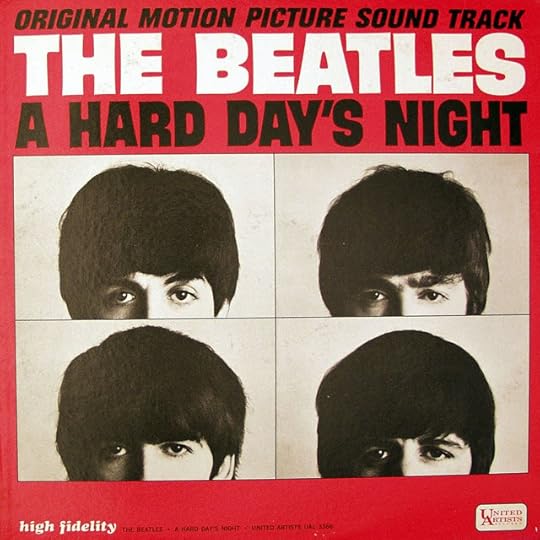
VeeJay could not keep up with the demand the LP and so, several counterfeit versions of the LP were commonly sold at major retailers. Check out your copy. If "The Beatles" appears below the hole and the rainbow label doesn't contain the color green, your copy is a fake. A valuable one, but a fake.
To follow up the release of Meet the Beatles, Capitol Records quickly released The Beatles Second Album two months later. The LP contained the covers that were left off Meet the Beatles and five original songs that had not been released on LP. (It was the Beatles' policy in the U.K. not to release songs on LPs that were previously available on 45s.) The LP went straight to No. 1 displacing Meet the Beatles.
The Beatles third LP (4th in the U.S.), A Hard Day's Night, also had differing U.K./U.S. versions, a trend that would continue until Sgt. Pepper in 1967. The U.K. Version contained 14 original songs, including the seven songs written for the film. One of those, "I’ll Cry Instead" didn’t make the cut in the film. All seven songs were also included on the American release. The remainder of the American tracks were Beatle instrumentals performed by studio musicians and conducted by George Martin. As a soundtrack, the LP was released on United Artists Records in the U.S., UA owning the distribution rights. Each of the LPs had differing, though similar, cover art, featuring Robert Freeman photographs; four on the American version in a red border, 20 on the British issue with a blue background. The songs not included on the American release would be released on the Capitol only album Something New just a month later. That LP would also contain two incidental tracks and a German-language version of "I Want to Hold Your Hand." A Hard Day's Night would spend 14 weeks at No. 1 with Something New sitting in the penultimate position, never making it to the top.
Here's something for collectors. Parlophone released a limited number of the Something New LP for servicemen overseas. Get your hands on one and you're a thousand dollars richer.
In the U.S., Something New was followed by a documentary LP called The Beatles Story followed by Beatles '65, which contained 8 of the 14 songs from the British canon LP, Beatles For Sale. The six omitted songs would appear on Beatles VI later in the year but not until after Capitol's release of The Early Beatles. Capitol had obtained the right to those songs on Introducing the Beatles released by VeeJay Records. The LP was released without fanfare and was the only American release of a Beatles album not to make it to No. 1 or No. 2; The Early Beatles made it to only No. 43 on the Charts.
In the meantime, the Beatles 4th British release, Beatles For Sale, would replace A Hard Day's Night as the top-selling LP and would stay there for seven weeks. It was replaced by The Rolling Stones No. 2, but would return to the top after a week. The Stones would regain the position after three weeks, but the Beatles (for sale or not), would again surge to No. 1 until the LP was ousted by Dylan's first electric release, Bringing It All Back Home. Eleven weeks total at No. 1.
Published on September 29, 2019 07:08
September 27, 2019
Miles From Nowhere
Miles From Nowhere...
...is available on Amazon and for your Kindle!
Join Miles for free on Kindle Unlimited or order the Kindle version for $2.99. The softbound version is $10.99.
Miles From Nowhere is a rock 'n' roll pilgrimage, the journey of a young man in poor health as he travels from California to Woodstock to see his idol, Jimi Hendrix. Along the way, he meets friends and family, an entourage of hippies and bohemians, musicians and socialites, and each time you put the novel down you'll have another familiar song in your head.
Order your copy of Miles From Nowhere on Amazon or click the links in the sidebar. Order here on the website and get a personally autographed copy for just $14.00 including shipping.
Published on September 27, 2019 12:47
September 26, 2019
Abbey Road Turns 50 Today
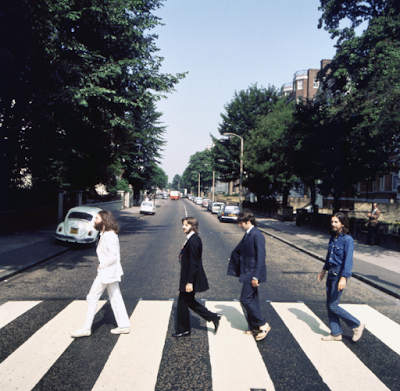 The polished arrangements, the crystal clarity of the sound, the performances - all phenomenal, all Abbey Road. From the opening riff of "Come Together," which features Lennon's vocal and lead guitar and Macca’s bass, Abbey Road is rock, blues, funk, vaudeville, all-in-one.
The polished arrangements, the crystal clarity of the sound, the performances - all phenomenal, all Abbey Road. From the opening riff of "Come Together," which features Lennon's vocal and lead guitar and Macca’s bass, Abbey Road is rock, blues, funk, vaudeville, all-in-one. As for Harrison's "Something," it was Lennon's favorite Beatles song. The lyrics, melody, bassline, tempo change at the bridge, orchestration coupled with George's outstanding vocal and guitar make for a three-minute masterpiece. "Here Comes The Sun" is no less brilliant.
Paul McCartney's contributions range from the 23 seconds of "Her Majesty" to the sheer emotion of "Oh! Darling."
The Abbey Road Medley, "Sun King," "Mean Mr. Mustard," "Polythene Pam," "She Came In Through The Bathroom Window," "Golden Slumbers," "Carry That Weight," and "The End," represent the Beatles at their best and their last, the songs joined as a seamless whole, a mini pop opera that lead the way for "Band on the Run" and "Bohemian Rhapsody." (Important to note, though, that Jimmy Webb should be given credit for the genre, as well, with the 6-minute + "MacArthur Park," the No. 1 smash by Richard Harris – you may know him as Dumbledore.)
There’s really nothing more to be said. 50 years ago. Still tops. Just go buy it.
Published on September 26, 2019 06:27
September 25, 2019
Fare Thee Well... Robert Hunter, Dead at 78
"In the attics of my life, full of cloudy dreams unreal.
Full of tastes no tongue can know, and lights no eyes can see.
When there was no ear to hear, you sang to me..."
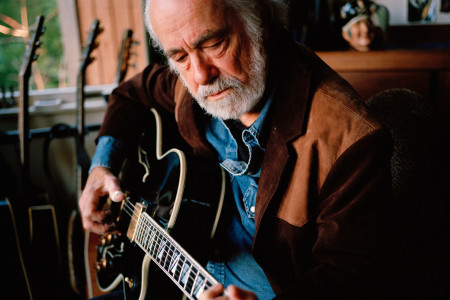
Robert Hunter, who provided the Grateful Dead with their most heartfelt lyrics, died Monday night. He was 78. One of rock's Poet Laureates, his lyrics, like those from "Box Of Rain" and "Ripple" illustrate how concise his use of language was, and how integral to the Dead's success.
Full of tastes no tongue can know, and lights no eyes can see.
When there was no ear to hear, you sang to me..."

Robert Hunter, who provided the Grateful Dead with their most heartfelt lyrics, died Monday night. He was 78. One of rock's Poet Laureates, his lyrics, like those from "Box Of Rain" and "Ripple" illustrate how concise his use of language was, and how integral to the Dead's success.
Published on September 25, 2019 05:07
September 24, 2019
Wow. Even Young People Are Old Now.
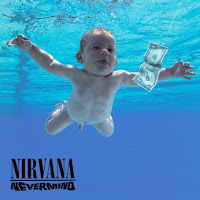 28 years ago today. Where were you?
28 years ago today. Where were you?In your Gardiner art book from college (everyone still has it in a box in the basement), the intro (you skipped it) addresses critiquing art in context, which meant understanding the times in which the work was released. Honestly, though, there's not much to report on the 90s. Nothing really happened. Bill Clinton would soon be elected president and the American economy would be at its height, equalling the prosperity of the early 1920s. The only real issue was music. Case in point, the biggest songs of September '92? Right Said Fred's "I'm Too Sexy For My Shirt," Sir Mix A Lot's "Baby's Got Back" and "Jump" by Kris Kross. So, yes, I remember it well. Cobain and Co. were a Godsend.
Published on September 24, 2019 08:13



